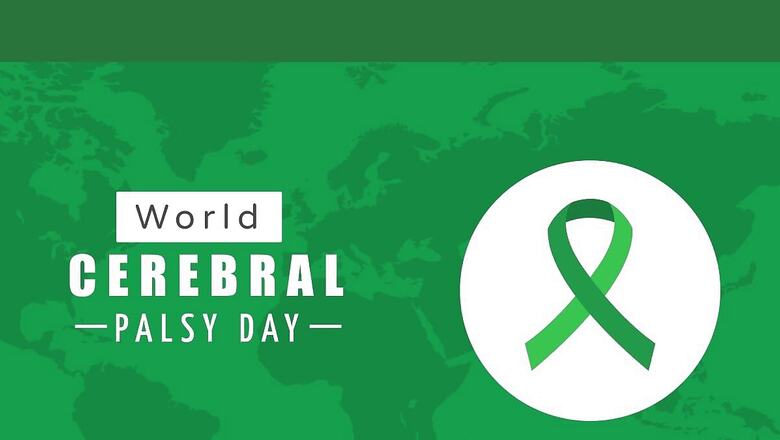
views
WORLD CEREBRAL PALSY DAY 2023: World Cerebral Palsy Day, observed every year on October 6, provides an opportunity to honour the lives and accomplishments of individuals living with cerebral palsy—a lifelong neurological disability that impacts their movement, posture, and coordination. This day is marked to honour those struggling with this condition, further bringing them together, their families, supporters, and organisations from over 100 countries together.
As the world gears up to mark World Cerebral Palsy Day 2023, here is everything you need to know about the condition, its causes, symptoms, and treatment.
What is Cerebral Palsy?
Referred to a group of neurological disorders that appear in people during infancy or early childhood permanently affecting body movements and muscle coordination, Cerebral Palsy is usually caused by any sort of abnormal brain development or damage to the developing brain.
While “Cerebral” means having to do with the brain, “Palsy” means weakness or problems with the muscles. Those struggling with CP face problems with their body movements and posture and also have related conditions like intellectual disabilities, seizures, problems with vision, speech, and hearing, or issues in the spine or joints. According to the Centers for Disease Control and Prevention (CDC), Cerebral Palsy can be classified according to the type of movement disorder involved.
Cerebral Palsy Types
There are four types of CP including Spastic Cerebral Palsy, Dyskinetic Cerebral Palsy, Ataxic Cerebral Palsy, and Mixed Cerebral Palsy.
Causes of Cerebral Palsy
Cerebral Palsy is caused by abnormal development of a person’s brain or damage that affects his/her ability to control muscles in early childhood. With that said, there are several possible reasons for such an abnormal development. It can happen before birth, during birth, within a month after birth, or even in the first year of a child’s life when the brain is still developing.
Some examples of causes before or during birth that can cause CP include premature birth, congenital malformations, infection in the central nervous system, genetic issues, and lack of blood and oxygen flow to the fetal brain, among other factors.
Apart from that, infants often develop CP after birth due to a series of events like accidental injuries, physical abuse, asphyxiation, and infection in and around the brain among other factors.
Symptoms of Cerebral Palsy
The symptoms of Cerebral Palsy vary from person to person depending on their age. While infants with CP usually have developmental delays, they tend to have aggravated issues as they start growing up.
- Children younger than 6 months of age can have difficulty in keeping their heads up, and feel stiff and floppy.
- Kids older than 6 months old have problems rolling over in either direction, bringing their hands together, bringing their hands to the mouth, and even reaching out both hands at the same time.
- As the kids grow up, they further face trouble in crawling as they usually crawl in a lopsided manner, pushing off with one hand and leg, while dragging the other ones.
- Children also face difficulty in standing even with support.
- Other symptoms include differences in head sizes which are either unusually smaller or unusually larger, a lack of interaction with other people, lack of muscle tone, delayed development, and uncoordinated movement.
Treatment of Cerebral Palsy
While Cerebral Palsy can’t be cured completely, there are certain treatments that can indeed help in improving the child’s capability to help manage the disability. In order to have better chances at overcoming the developmental disability, it is suggested that the treatment be started as early as possible.
- In this regard, there is no standard therapy that works for every person. Based on the diagnosis, parents and the children need to work with a team of healthy professionals to identify their specific impairments and develop a plan to tackle the disabilities.
- One of the major treatment options is including therapies like physical therapy, occupation therapy, recreation therapy, and speech and language therapy for children.
- Healthcare professionals also prescribe certain medications that can be used as the first line of treatment to relax the symptoms of cerebral palsy.

















Comments
0 comment